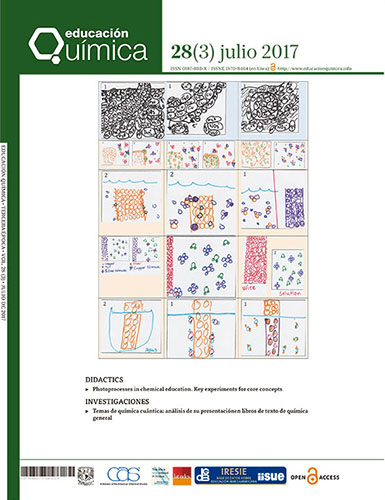Learning from contrasting molecular animations with a metacognitive monitor activity
Main Article Content
Abstract
A common problem associated with having General Chemistry students view animations is that students tend to accept the animations as ‘‘correct’’ explanations without question or consideration for their limitations. This study proposes a new strategy for presenting animations in chemistry instruction that requires students to critique contrasting animations to determine which animation is a best fit with video-recorded scientific evidence. The purpose of the study was to examine how undergraduate students, enrolled in their first semester of a General Chemistry course, responded to two contrasting animations, one that was scientifically accurate and one that was scientifically inaccurate, as molecular level explanations of a video of a redox reaction involving the reaction between solid copper and aqueous silver nitrate. An analysis of a metacognitive monitoring activity was performed to study how students saw similarities and differences between the animations, as well as, to their own molecular level explanations of the reaction event. The findings revealed that students picked up on the mechanistic differences between the animations, but they struggled with understanding why the reaction happened. Regardless of their background knowledge of chemistry, students voiced preference for animations that were simplistic in their appearance and obvious in what they conveyed while also having an explicit connection to the macroscopic level.
Article Details
Citas en Dimensions Service

Educación Química por Universidad Nacional Autónoma de México se distribuye bajo una Licencia Creative Commons Atribución-NoComercial-SinDerivar 4.0 Internacional.
Basada en una obra en http://www.revistas.unam.mx/index.php/req.
